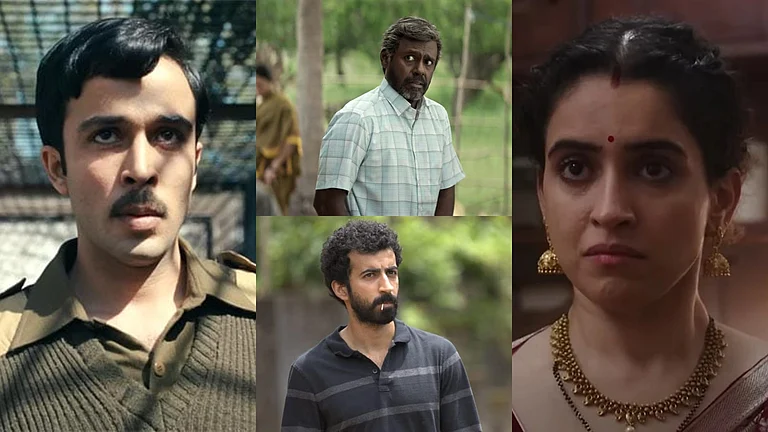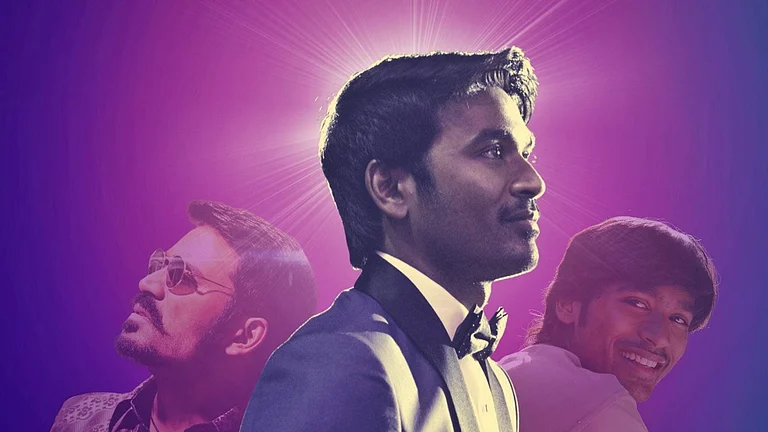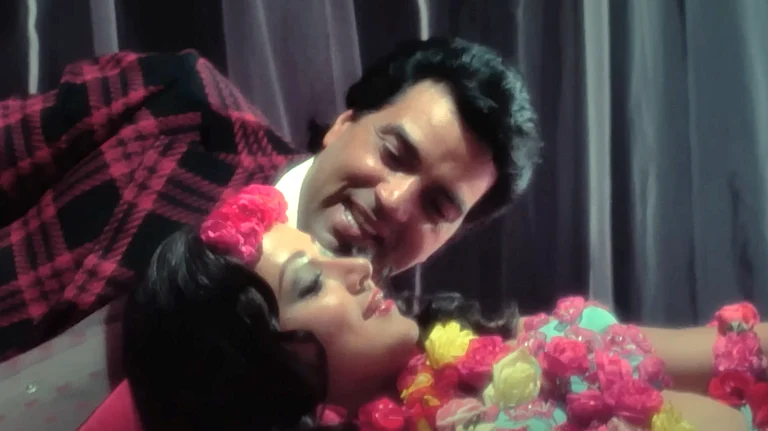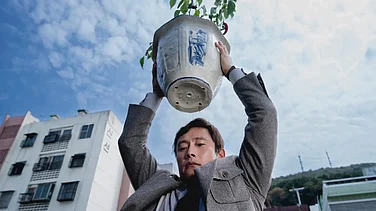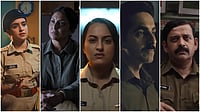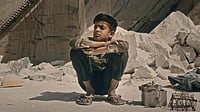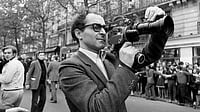Anurag Basu’s Jagga Jasoos (2017) should have been Ranbir Kapoor’s magnum opus. Jagga Rana Bagchi should have been the defining role of Kapoor's career. It had the makings of everything Bollywood could have been: adventurous, meta, experimental, but in a mainstream way.
Jagga was a rare experiment for Bollywood in terms of form and tone. It was part Broadway-style operetta, part Tintin-esque adventure, and part emotional coming-of-age story. The film consciously resisted the conventional Bollywood formula of storytelling, while stitching in some of the most popular and familiar motifs of it to still appeal to the masses.
The system, which prefers paint-by-numbers familiarity, is to be blamed for the failure of Jagga; and the butterfly effect must be held responsible, for the existence of Ranvijay Singh and Animal (2023) and the toxic hypermasculinity that took over Bollywood and became the norm instead.
When Jagga Jasoos released in 2017, it was met with polite bafflement at best and complete dismissal at worst. For a film that attempted to be so many things, it was perhaps always destined to confuse an audience not used to adventure and action without testosterone. But eight years on, the film has quietly found its place in the canon—not as a flawless masterpiece, but as a rare mainstream Bollywood adventure film that deserved its flowers for its earnestness and vivid world-building. Jagga couldn’t find box office success, but became somewhat of a cult wonder.

I remember the ride Jagga felt like, when I watched it all by myself in the darkness of a theatre early on a Friday morning. As a Bengali viewer, it was hard not to feel this sense of pride and affection for what the film attempted. This film was a rare celebration of Bengali culture in a freshly post-Piku (2015) Bollywood that loves to caricature it ever so often.
It evoked an entire literary universe. The elaborate jabberwocky echoed Sukumar Ray’s HaJaBaRaLa (1921), while the chhondo (metered rhythm) in the dialogue was an obvious nod to Hirak Rajar Deshe (1980). There were the throwaway references to fictional places like Shundi (a direct reference to Goopy Gyne Bagha Byne (1969)), Tiktiki (lizard) and Agapastala; the latter sounded suspiciously like “agapachhtala” (a quintessentially Bengali term that roughly means “from bum to the front” and is used to mock people).
This was storytelling through the lens of a childhood, which only Bengalis could find comforting and amusing. The meta-ness of Jagga Jasoos, its refusal to turn Bengalis and our culture into a punchline and, of course, that disastrous last half an hour of the film, perhaps alienated a large part of the Hindi audience from this film. Plus, it was too close on the toes of Barfi! (2012), a film that shared a tonal soul with Jagga.

Jagga was not meant to be just for Bengalis. It was for anyone who ever lost themselves in adventure comics and mystery stories. It offered up a protagonist who wasn’t macho, but awkward and stammering—someone who sang his way through pain.
Jagga was a shy but sharp teenager, who used music to overcome his speech impediment. That this was the same actor who would go on to be celebrated for Animal, a film that weaponised masculinity in the most alarming ways, is a tragedy of the industry’s own making. Jagga could have been Kapoor’s defining role—a boyish, genre-bending icon. Instead, it got buried under headlines about shooting delays, the Ranbir-Katrina breakup, and studio mishandling.
Despite Jagga’s softer edges, he too wasn't exactly the image of healthy masculinity (you don't try to kiss a sleeping woman if you are). Like most male filmmakers painting their Bildungsroman scapes around a male protagonist, discussions on bodily functions come with a modicum of grossness. Of course, there was a cheekiness in the gross-out humour in “Galti Se Mistake” that made fun of the mardana (masculine) things men are expected to do and become, as they come of age. But even then, it couldn’t escape the weird pressures of performing problematic masculinity itself.

Jagga Jasoos and challenging the dominant grammar of Hindi cinema
What Jagga Jasoos truly tried to do was challenge the dominant grammar of Hindi cinema. Bollywood likes its heroes muscular and brooding, its heroines coy and hyper-feminine, and its narratives to be built around the melodramatic beats of trauma, revenge, or romance. Jagga tried to use these beats as little as possible.
The romance was incidental. It was a byproduct of Ranbir-Katrina’s real life equation spilling over. Kaif’s Shruti Sengupta was not there to be saved. Nor was she there to be romanced in a chiffon saree or chased through scenic destinations. Shruti was a fellow adventurer.
The real motor of the film was the childlike pursuit of mystery and the ache of abandonment. It was about growing up, and losing one’s parents, and trying to find answers in an absurd world. Basu’s set-pieces were ornate, chaotic, and bursting with colour (sometimes a bit too much, akin to the Facebook aesthetics of the time) and detail. It’s one of the only mainstream Hindi films at this juncture in Bollywood, where everything was trying to say the same thing: life is all about chasing impossible adventures, while driving an impossible vehicle (how did Jagga’s bike even work?).

Of course, the film wasn’t perfect. Its last act was a fiasco. The hasty wrap-up betrayed the sheer number of production issues the film went through. This patchwork ending to an otherwise well-made pastiche film stood out like a sore eye. There were the mismatched voiceovers and odd transitions (particularly in Katrina’s dubbed lines, which fluctuated between different timbres and tonalities). There was also the fact that the actors’ faces changed drastically throughout the film that took about three years to complete.
Down the road not taken
Jagga failed, but it failed trying something new. Bollywood rarely tolerates artistic risks unless they can be packaged a certain way. Jagga defied that norm and tried to re-capture some of the magic we lost when films, even in the mainstream, could be more than one thing. It was guileless. And for that, it was dismissed as frivolous. But that frivolity—the nirmal anand (simple pleasures of life) as Hrishikesh Mukherjee would say—was the point. In a country where coming-of-age stories are mostly told through sexual awakening or violence, Jagga Jasoos dared to be goofy. It built a storybook world that had double-headed villains, Soviet spies, travelling circuses, while simultaneously encouraging young viewers to think critically.

Beneath the whimsy and musical numbers, the film quietly critiqued the global war economy. From Syria to Palestine to Kashmir, Jagga Jasoos dared to ask a question rarely heard in mainstream Bollywood: Who arms the poorest of nations? For all its childlike charm, the film wasn’t naïve.
Looking back, Jagga feels like a road not taken, the one that could’ve led to a more playful, narrative-rich, visually daring Bollywood. Instead, we got stuck with a resurgence of toxic masculinity, lazy biopics, and franchise fatigue (something Basu also succumbed to with his recent Metro… In Dino). Jagga was a moment of cinematic whimsy that Bollywood promptly punished for being too earnest, too strange, too weird.
Eight years later, it feels less like a flop and more like a missed opportunity for the industry. Maybe it didn’t change Bollywood. But it gave us a glimpse of what could have been.
Debiparna Chakraborty is a film, TV, and culture critic dissecting media at the intersection of gender, politics, and power








